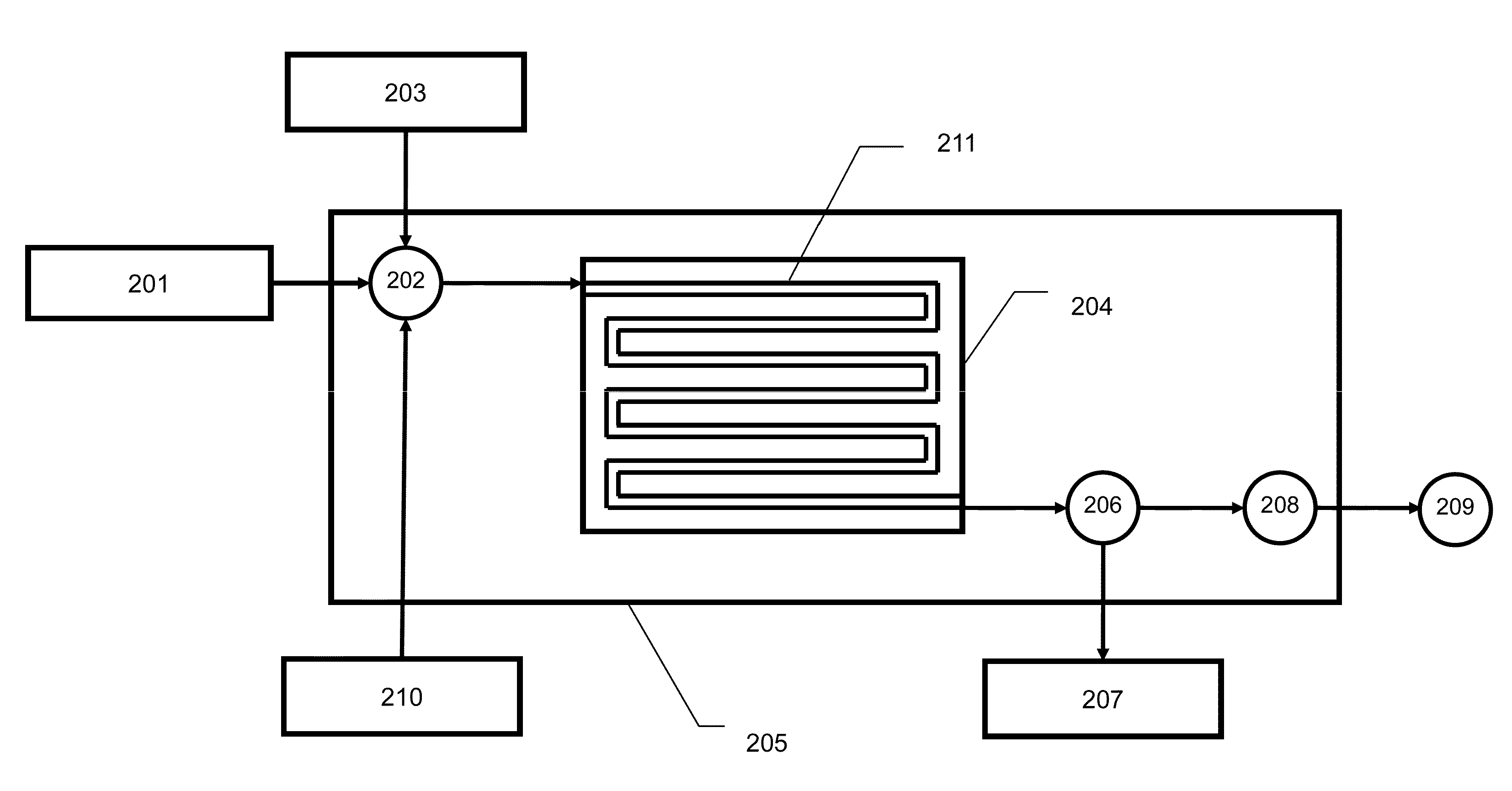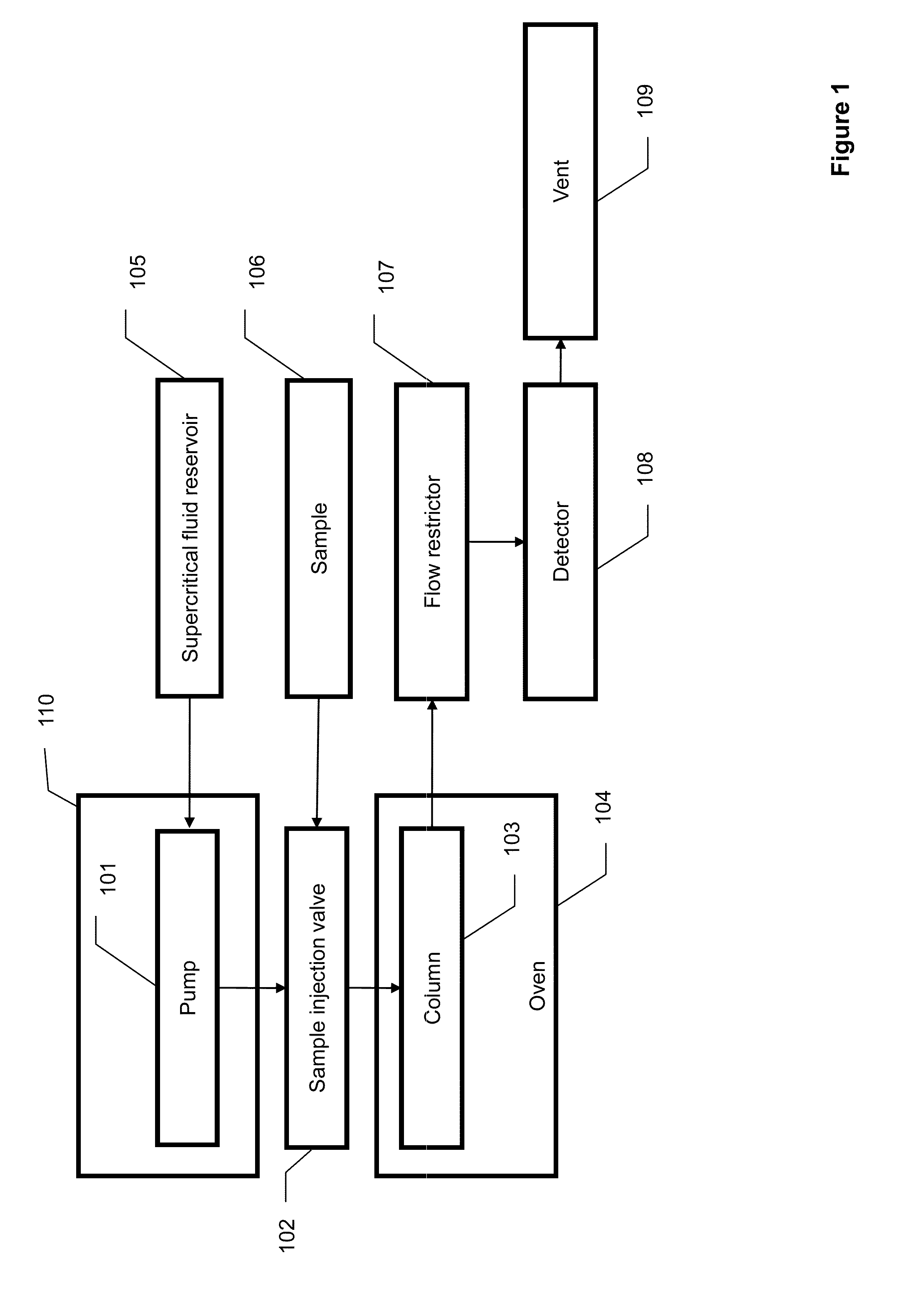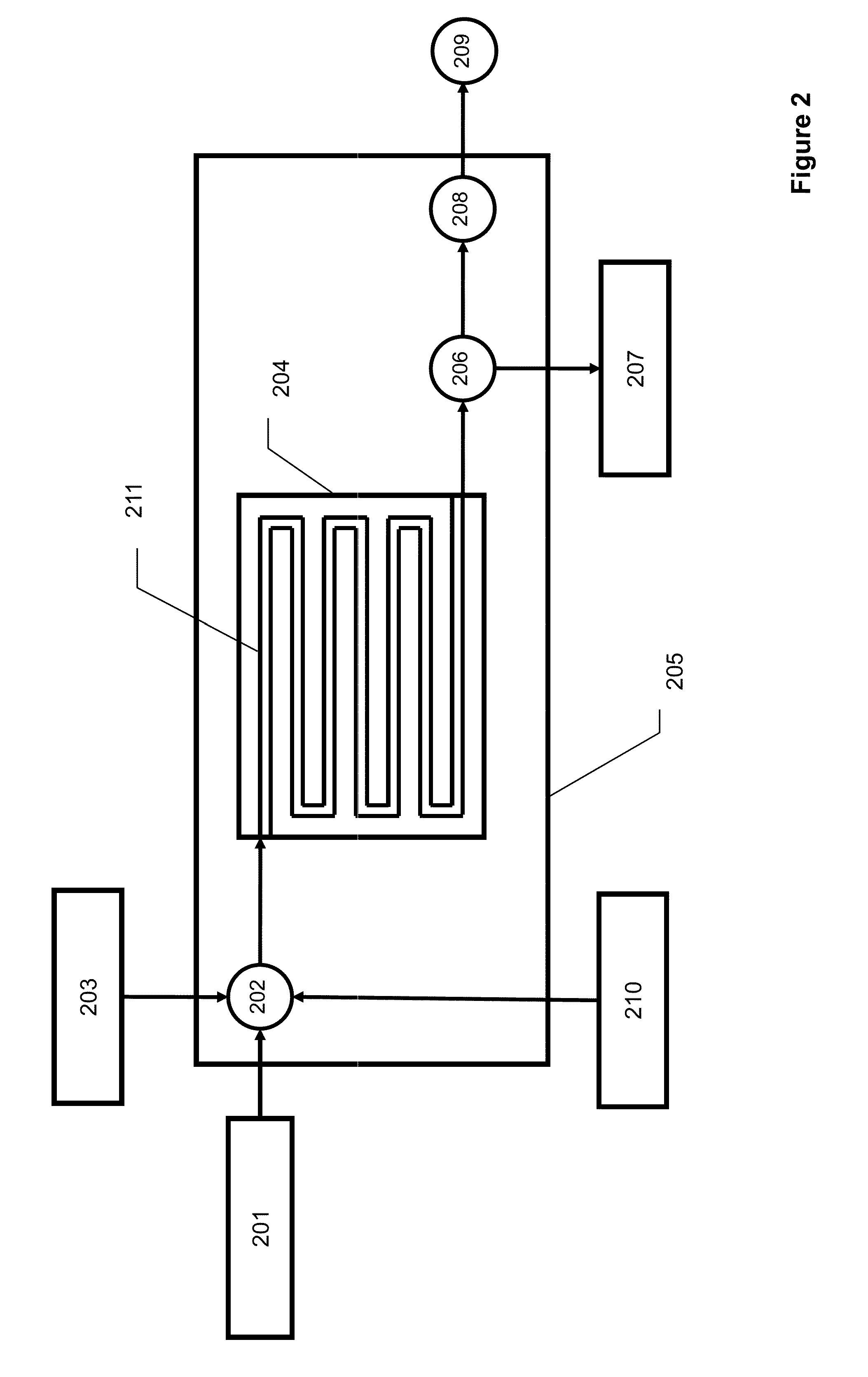[0019]SFC has been demonstrated to have superior speed and resolving power compared to traditional HPLC. Separations have been accomplished up to an
order of magnitude faster than HPLC instruments using the same chromatographic columns. This is a consequence of the superior
solubility and
diffusion rates of solutes in mobile phases based on supercritical fluids. Because the
viscosity of supercritical fluids is very low, the
diffusion of solutes in supercritical fluids is about then times greater than in liquids. This results in decreased resistance to
mass transfer in the
chromatographic column and allows for fast separation with superior resolution. The lower viscosities of supercritical fluids relative to liquid solvents means that the pressure drop across a
chromatographic column for a given flow rate is greatly reduced. The higher
diffusion constant means that longer columns and higher analysis speeds are possible, and the higher density of the supercritical fluid means higher
solubility and increased column loading is possible. Another
advantage of SFC is that, compared with GC, capillary SFC can provide
high resolution chromatography at much lower temperatures than GC, which permits rapid analysis of thermally labile compounds such as organic peroxides (e.g. HMTD, TATP), carbamates and pesticides. SFC is frequently used to separate chiral and achiral components using special columns.
[0020]The
solvation strength of a supercritical fluid is directly related to its
fluid density. Due to their high densities (e.g. 0.2-0.5 gm / cm3), supercritical fluids are capable of dissolving large, non-volatile molecules. Solids can become highly soluble in the presence of a supercritical fluid for example, and SFC has been employed to separate polymers, to extract
caffeine from coffee beams and
nicotine from tobacco. Another
advantage of SFC is that analytes may be recovered quickly from solution by simply allowing the supercritical fluid to evaporate, leaving only
analyte and no
solvent. This makes collection of fractions straightforward. For these reasons, SFC is finding applications in the
fractionation of oils,
polymer chemistry, environmental and
food analysis.
[0021]There are a number of possible fluids which may be used in SFC as the mobile phase. However, supercritical CO2 is the preferred fluid in SFC because it is inexpensive, non-toxic, non-flammable and has a relatively low critical
temperature and pressure (Tc=31.3° C., P=72.9 atm). The main
disadvantage of
carbon dioxide is its inability to elute very polar or ionic compounds. An
organic solvent is frequently added as a polar modifier at a concentration of a few tens of percentages. This is generally an
organic fluid which is completely miscible with carbon dioxide (alcohols, cyclic ethers) but can be almost any liquid including water. The
organic solvent modifier adjusts the polarity of the mobile phase for optimum chromatographic performance.
[0022]The addition of the modifier fluid improves the solvating ability of the supercritical fluid and sometimes enhances selectivity of the separation. It can also help improve separation efficiency by blocking some of the highly active sites on the
stationary phase. For that reason modifier fluids are commonly used in packed column SFC. Both ‘open’ capillary and packed columns have been demonstrated with SFC instruments, and organic modifier can make a difference to column performance. Since different compounds require different concentrations of organic modifier to elute rapidly, a common technique is to continuously vary the composition of the mobile phase by linearly increasing the organic modifier concentration.
[0030]Recent increases in solvent costs, acute solvent shortages and increased awareness of environmental factors have driven renewed interest in ‘green’ analytical technologies such as SFC. While macroscopic SFCs are available commercially, are greener, generate virtually no waste and use little or no solvent, and offer performance that is comparable if not superior to HPLCs, their size and cost is significant and may be limiting their uptake by users.
 Login to View More
Login to View More 


